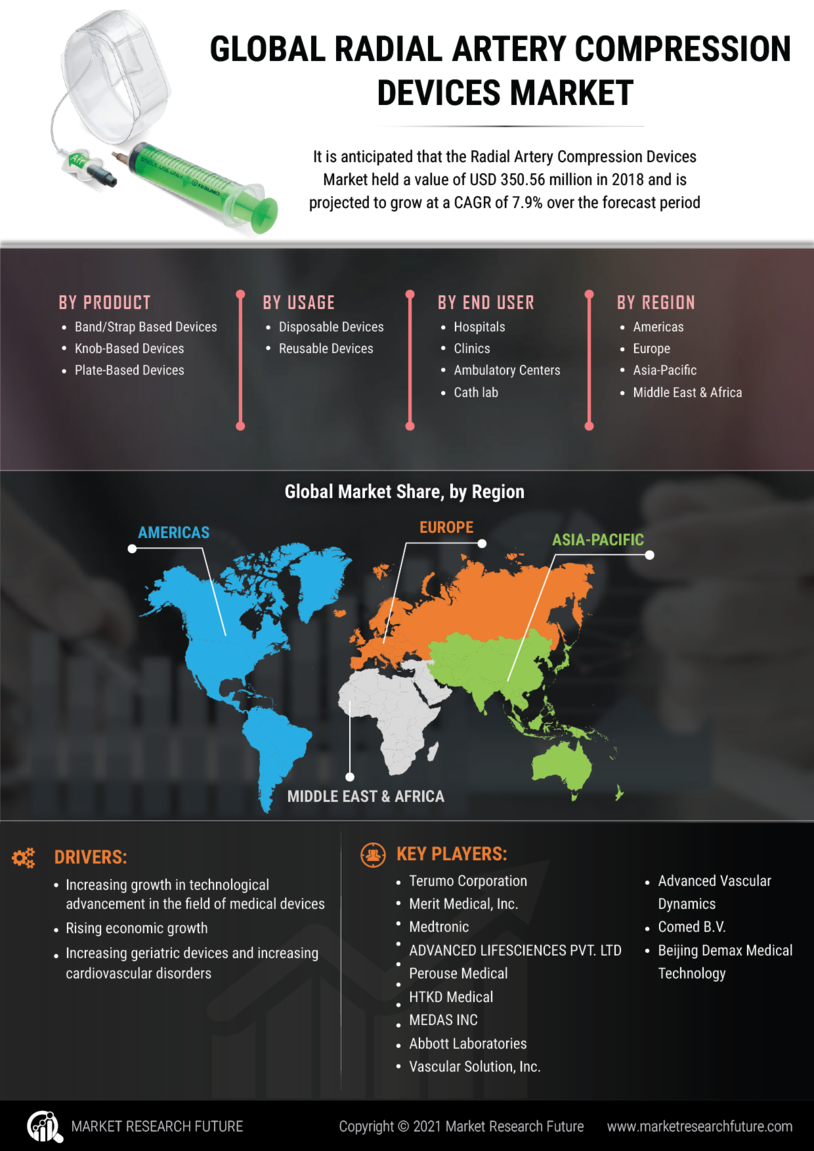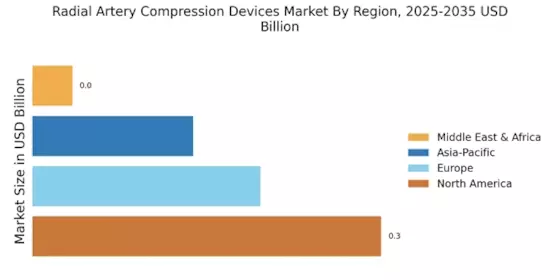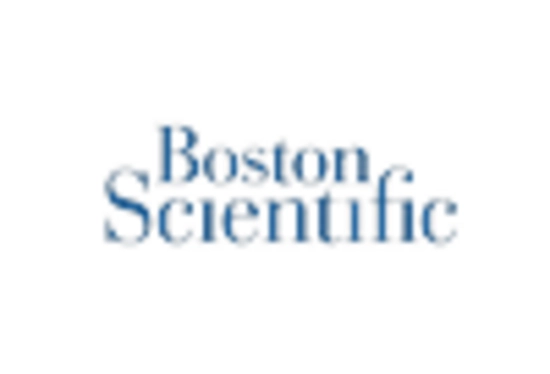Increased Focus on Patient Safety
The Radial Artery Compression Devices Market is witnessing a heightened emphasis on patient safety, which is driving the demand for reliable and effective compression solutions. As healthcare institutions prioritize patient outcomes, the need for devices that minimize complications such as hematomas and arterial occlusions becomes paramount. Regulatory bodies are also advocating for stringent safety standards, prompting manufacturers to innovate and enhance their product offerings. Recent market analysis suggests that devices with improved safety features are gaining traction, as they align with the broader healthcare objective of reducing adverse events. This focus on safety not only boosts consumer confidence but also encourages healthcare providers to adopt advanced radial artery compression devices, thereby expanding the market.
Growing Awareness and Training Programs
The Radial Artery Compression Devices Market is benefiting from growing awareness and training programs aimed at healthcare professionals. As the medical community recognizes the advantages of radial access techniques, educational initiatives are being implemented to enhance the skills of practitioners. These programs not only inform healthcare providers about the latest advancements in radial artery compression devices but also emphasize the importance of proper technique in minimizing complications. Market data suggests that regions with robust training programs have seen a notable increase in the adoption of these devices. This trend indicates that as awareness grows, so too does the market potential for radial artery compression devices, as more practitioners become proficient in their use.
Rising Incidence of Cardiovascular Diseases
The Radial Artery Compression Devices Market is significantly impacted by the rising incidence of cardiovascular diseases, which necessitates an increase in interventional procedures. As the global population ages and lifestyle-related health issues become more prevalent, the demand for effective cardiovascular interventions is expected to rise. This trend is supported by data indicating that cardiovascular diseases remain the leading cause of mortality worldwide. Consequently, healthcare systems are increasingly adopting radial artery access techniques, which require specialized compression devices to ensure patient safety and comfort. The market is likely to expand as healthcare providers seek to implement best practices in managing cardiovascular conditions, thereby driving the demand for advanced radial artery compression devices.
Shift Towards Minimally Invasive Procedures
The Radial Artery Compression Devices Market is significantly influenced by the ongoing shift towards minimally invasive procedures in cardiovascular interventions. As healthcare providers aim to reduce patient recovery times and minimize complications, the demand for devices that facilitate such procedures is on the rise. This trend is reflected in the increasing number of radial access procedures, which have been shown to result in lower rates of bleeding and faster recovery compared to traditional methods. Market data indicates that the adoption of radial artery access has increased by over 30% in recent years, further propelling the need for effective compression devices. Consequently, manufacturers are focusing on developing devices that cater specifically to this growing segment, ensuring that they meet the evolving needs of healthcare professionals and patients alike.
Technological Advancements in Radial Artery Compression Devices
The Radial Artery Compression Devices Market is experiencing a surge in technological advancements that enhance the efficacy and safety of these devices. Innovations such as automated compression systems and smart monitoring technologies are being integrated into device designs. These advancements not only improve patient outcomes but also streamline the procedural workflow for healthcare professionals. The market is projected to grow at a compound annual growth rate (CAGR) of approximately 6% over the next five years, driven by these technological improvements. Furthermore, the introduction of user-friendly interfaces and enhanced materials is likely to increase adoption rates among medical practitioners, thereby expanding the market's reach. As healthcare systems continue to prioritize efficiency and patient care, the role of advanced radial artery compression devices becomes increasingly pivotal.


















Leave a Comment